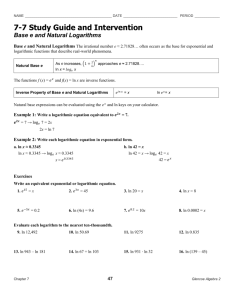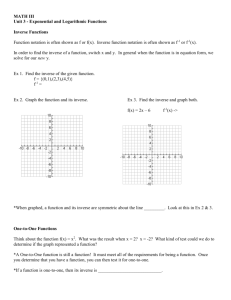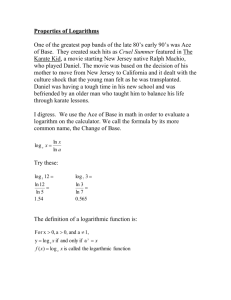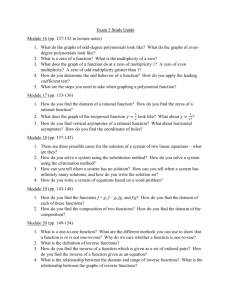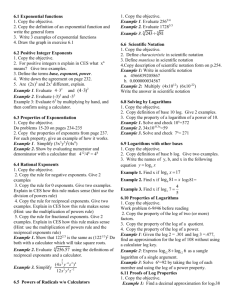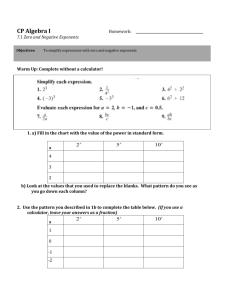Study Guide for Chapter 5: Inverse, Exponential, and Logarithmic
advertisement
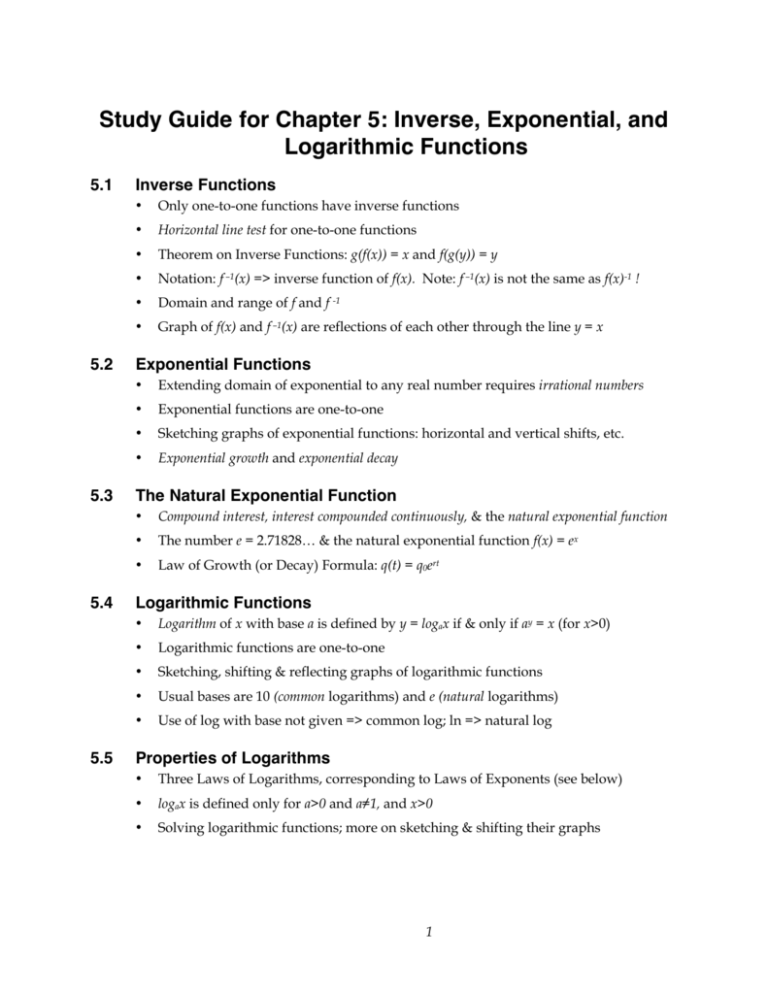
Study Guide for Chapter 5: Inverse, Exponential, and Logarithmic Functions 5.1 5.2 5.3 5.4 5.5 Inverse Functions • Only one-to-one functions have inverse functions • Horizontal line test for one-to-one functions • Theorem on Inverse Functions: g(f(x)) = x and f(g(y)) = y • Notation: f –1(x) => inverse function of f(x). Note: f –1(x) is not the same as f(x)-1 ! • Domain and range of f and f -1 • Graph of f(x) and f –1(x) are reflections of each other through the line y = x Exponential Functions • Extending domain of exponential to any real number requires irrational numbers • Exponential functions are one-to-one • Sketching graphs of exponential functions: horizontal and vertical shifts, etc. • Exponential growth and exponential decay The Natural Exponential Function • Compound interest, interest compounded continuously, & the natural exponential function • The number e = 2.71828… & the natural exponential function f(x) = ex • Law of Growth (or Decay) Formula: q(t) = q0ert Logarithmic Functions • Logarithm of x with base a is defined by y = logax if & only if ay = x (for x>0) • Logarithmic functions are one-to-one • Sketching, shifting & reflecting graphs of logarithmic functions • Usual bases are 10 (common logarithms) and e (natural logarithms) • Use of log with base not given => common log; ln => natural log Properties of Logarithms • Three Laws of Logarithms, corresponding to Laws of Exponents (see below) • logax is defined only for a>0 and a≠1, and x>0 • Solving logarithmic functions; more on sketching & shifting their graphs 1 5.6 Exponential and Logarithmic Equations • To solve equations with variables in exponents, take log of both sides • …but valid only if all exponents have the same basis • Theorem on changing base: log b u = log a u (u>0; a, b>0 and a, b ≠ 1) log a b € Logarithms vs. Exponents In the tables below, a is a positive real number other than 1; u and w are any positive real numbers; and x, z, and c are any real numbers. Laws of Exponents vs. Laws of Logarithms Exponents 1 a x+z = a x ⋅ a z 2 € Logarithms a x−z = 3 ax az a cx = (a x )c € log a u + log a w = log a uw log a u − log a w = log a € u w log a u c = c log a u € Properties € of Logarithms vs. Exponents € € Exponents Logarithms 1 a0 = 1 log a 1 = 0 2 a1 = a log a a = 1 3 a log a u€= u log a a x = x € € € € Examples 2 log 2 7 = 7 € € € DAB, rev. April 2011 2 log10 10 = 1 log 2 2 7 = 7

